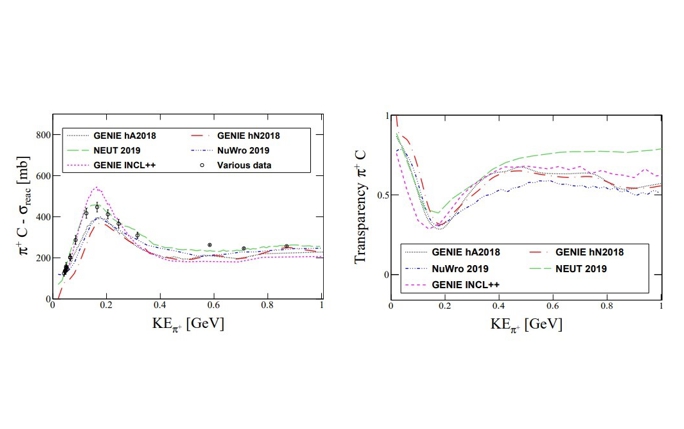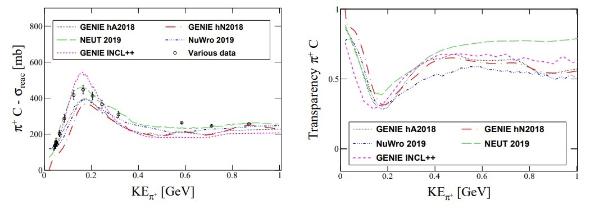Comparison of Validation Methods of Simulations for Final State Interactions in Hadron Production Experiments

LIV.DAT student Júlia Tena Vidal recently published a paper in collaboration with Steven Dytman (University of Pittsburgh, USA), Yoshinary Hayato (University of Tokyo, Japan), Roland Raboanary (University of Antananarivo, Madagascar), Jan Sobczyk (University of Wroclaw, Poland) and Narisoa Vololoniania (University of Antananarivo, Madagascar). This work is a product of an international collaboration with different neutrino MC generators: GENIE, NuWro and NEUT.
Within the LIV.DAT Centre, Júlia focuses on Physics Simulations to Underpin Discoveries in the Neutrino Sector and this work involves further development of the GENIE global analysis of neutrino scattering data. It will enable the of improved comprehensive simulations, the careful data-driven characterization of simulation uncertainties and the new GENIE global tunes will be tested exhaustively against Short-Baseline Near Detector (SBND) data.

Total reaction cross section and transparency for π +- carbon. Available data [E. Pinzon Guerra et al., Phys. Rev. D 99, 052007 (2019), 1812.06912] are shown along with calculations from GENIE, NuWro, and NEUT.
Júlia got involved in this particular work, leading to the now published paper, after attending the ECT* Workshop on Modelling Neutrino Interactions. Neutrino cross section and oscillation measurements depend critically on modeling of hadronic final state interactions (FSI). Often, this is one of the largest components of uncertainty in a measurement. FSI models are most often validated using hadron-nucleus data which introduces further uncertainties. The alternative is to use transparency data where the hadron starts propagating from inside the nucleus and the probability of interaction is measured as a function of hadron energy. The paper ‘Comparison of Validation Methods of Simulations for Final State Interactions in Hadron Production Experiments’ examines the relationship between π+ and proton total reaction cross section and transparency from a simulation viewpoint.
Further information:
"Comparison of validation methods of simulations for final state interactions in hadron production experiments"
S. Dytman, Y. Hayato, R. Raboanary, J. T. Sobczyk, J. Tena-Vidal, and N. Vololoniaina
Phys. Rev. D 104, 053006 (2021)